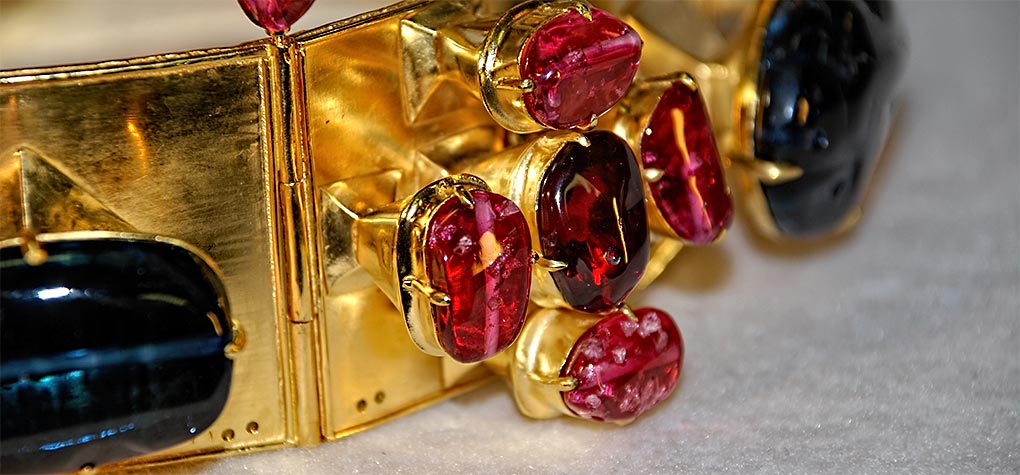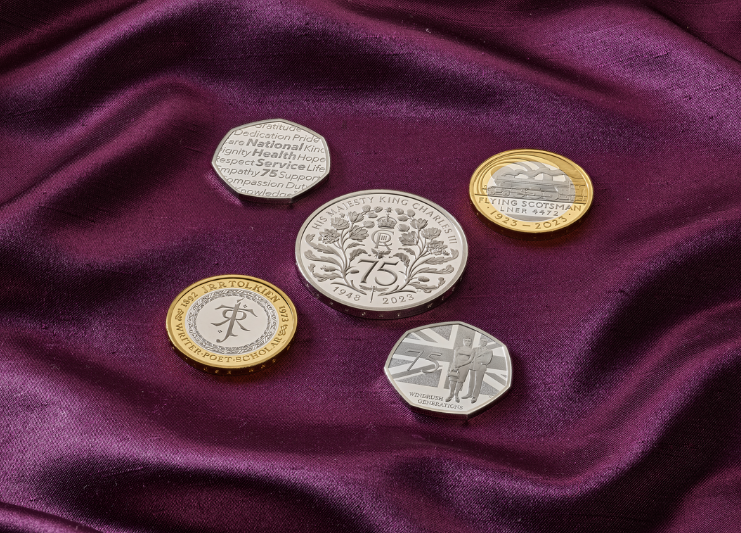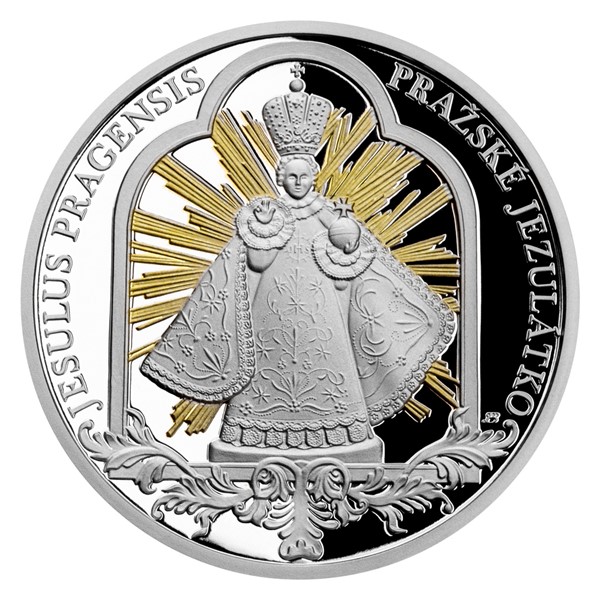Scanning a model made of plaster to create a digital 3D model for gold coins or medals involves using specialized equipment to capture the physical maquette's details and dimensions in an electronic format. The digital reproduction is used for a variety of reasons throughout the process of production.
3D Scanning Technique- High resolution 3D scanners are able to record dimensions and specifics on the plaster models. The scanners employ various techniques such as laser scanning and structured light to capture exact dimensions and geometrical shapes.
Capturing Surface Information: The scanner emits light or laser beams that hit the surface of the plaster model. The scanner captures the reflections and distortions. This data is used to create a model.
Data Collection - When the scanner moves over the model, it gathers an immense amount of data, creating an image of the model's geometry contours and details.
Conversion into 3D Model - The data points taken are processed by software which reconstructs them into a 3D digital model. The model is a replica of the physical and dimension of the maquette of plaster.
There are many reasons why you should create 3D digital models
Digital 3D model allows for exact reproduction of the physical model's dimensions and details. This ensures that final gold coins and medals are designed to match the intended design.
Digital models are easily modified and refined. Designers are able to modify 3D models without changing their original plaster maquette.
Integration with manufacturing Processes: Digital 3D models are compatible with a variety of manufacturing techniques, including CNC machining and 3D printing. This allows the rapid manufacturing of molds and other dies.
Digital 3D models may be used to document and archive the design. You can save them digitally for reference in the future, for reproductions, or as a way to record the history of the design.
By scanning and creating a 3D digital representation of the plaster model, designers and manufacturers can streamline the process of manufacturing, ensuring the accuracy and authenticity of replicating the original design. Check out the most popular Scanning and 3D Modeling Czechoslovakia gold medals more examples. including buy gold bullion, double eagle gold coin, gold and silver bullion, gold dollar, purchasing silver bars, medal gold medal, sovereign british coin, gold quarter 2000, buying silver, 24k gold bullion and more.

What Are The Benefits Of Using Laser Technology To The Refinement Of The Gold Coin Die Or Master Hub?
This method makes use of laser technology to refine and make precise details on the dies that are used to make gold coins or other medals. Here is how the laser technology aids in enhancing the surface of this method.
Following the initial machining, laser technology is employed to refine the die surface or hubs. It aids in smoothing out imperfections and remove burrs.
Detail Enhancement-
Laser ablation or engraving techniques are used to enhance or add details on the master hub or die. Lasers are able to precisely cut or etch material in order to create complex patterns lines, fine textures or patterns which are hard to create using conventional cutting.
Microstructuring-
Laser microstructuring creates microscopic features and textures on the surface die. This technique is used to create particular patterns or textures which enhance the visual appeal or security features of medals or coins.
Surface hardening or treatment-
Laser technology is used in some cases to treat or make harder master hubs or dies. This process enhances the strength of the surface as well as wear resistance, ensuring that the master hub or die can last a longer period of time.
Precision Alterations
Laser technology allows for precise alterations and corrections of the die or the master hub, with no impact on overall geometry. It permits surface adjustments that can correct any discrepancies and imperfections that may influence the quality of made-to-order metal or coins.
Controlled Material Removal
Laser ablation is a method to remove materials in a controlled manner, particularly when intricate details are needed. It provides a method of removal of material that is not contact, thus preserving the quality and integrity of the area around it.
Laser technology can be utilized to improve the surface of master hubs and dies and master hubs, which result in more clarity, better surface quality, and increased precision. Laser technology is employed to improve the surface of dies as well as master hubs, thereby improving the quality of their surfaces. Check out the top laser processing Prague Mint gold medals site tips. including buy gold silver, gold coins for sale, silver double eagle coin, gold coin shops near me, gold bullion price, buying silver bars, 1 oz gold bars, twenty dollar gold coin, $20 gold coin, gold coins for sale and more.

What Are The Various Ways In Which Gold Coins Or Medals Are Coated In Order To Guard Them?
Here are some of the different coating processes employed. Below are the various types of coatings used.
Clear Protective Film (Varies). This transparent protective film, which could comprise lacquer or polymer, shields the exterior of the coin from oxidation. This coating protects the metal underneath the medal or coin, and aids in maintaining the original look of the item.
Enhancement Appearance
Gilding or Gold plating - A thin layer of gold is applied to gold-plated coins or medals. This adds a luxurious appearance to the piece or medal.
Aesthetic Aspects
Patina or antique finishes are produced using special coatings or chemical treatments. This process artificially ages the surface, creating an oxidized or aged appearance which adds dimension and character to the design.
Coloring and Colorization- Certain areas of a medal or coin are colored using special coatings or enamels. This can be done to highlight specific features of the design, to add the visually appealing designs.
Anti-Tarnish Coatings-
Anti-Tarnishing Solutions - These solutions or coatings can be utilized on coins and medals with intricate designs or that are susceptible to tarnishing. These coatings stop the metal's surface from oxidizing or discoloring over time.
Specialized Coatings for Security or Authentication
UV-Reactive Coatings. Some metals and coins have a unique UV-reactive coating which reacts to UV radiation. It reveals hidden elements such as security codes or encryption.
Selective Coatings for Contrast
Selective Coating Removable- In certain cases the coatings on coins or medals are removed in a selective manner to create contrast when polished and coated surfaces.
Each process serves a distinct objective, be it to protect metals, improve appearance, achieve specific aesthetic results, and/or increase security. These coatings impact the visual appeal, durability and value of gold coins or other medals. See the most popular coating Prague Mint gold medals more info. including 2000 p gold dollar, gold coin dealers near me, 1oz gold eagle coin, gold and coin shops near me, small gold coins, gold and silver coins, coin gold bullion, cost of a gold bullion bar, gold american eagle price, gold bars for sale near me and more.

How Is Gold Fed Into The Coin Presses, And Then Stamped Under High Pressure During Minting?
In the process of minting, gold blanks must be loaded into coin presses, and stamped at high pressure to become finished coins or awards. This is a brief overview of the steps involved in loading blanks
The loading of gold blanks into a feeder that is connected to a coin press happens after they've been cleaned, inspected and assessed. This feeder system will provide an ongoing supply of blanks to the coin press.
Feeding Blanks to the Press
This feeder system ensures that each blank is placed precisely inside the stamping chamber. This assures the precise positioning of each stamping blank.
Alignment and Positioning
The blanks are placed in the press, and placed in the striking area to ensure they are centered and perfectly oriented to perform the stamping.
Striking at High Pressure
A coin press is a device that applies high pressure to gold blanks with two dies, one stationary, the other moving. The stationary die makes a negative impression on the design of the coin while the moving one is the hammer that strikes the blank.
The die moves and strikes the blanks with immense force. The design is transferred onto the surface of the blank. The die's pressure creates the design and the raised relief.
Repetition of Striking Is Optional
Multi-strikes can be applied for high-end coins and medals, such as proofs or collectors' editions. The result is an improved and clearer appearance. Each strike increases the clarity on the blank surface.
Collection and ejection
The medals or coins will be removed and put in containers or trays when they have been struck. Stamping designs are then subjected to quality control inspections to ensure that they meet the standards and criteria.
Post-Processing-
In addition to edge letters and refeding, based on the specifications for the design or mint specifications, certain medals or coins will go through post-strike or other treatment.
The process of stamping under high pressure is crucial because it transfers the desired design to the gold blanks, transforming the blanks into finished pieces of gold ready for circulation, collection, or commemoration. The stamping process requires accuracy as any variations in alignment and pressure can impact the final product's quality. Check out the best minting Czechoslovakia gold medals site tips. including 2000 olympic, 20 dollar gold coin, buy silver & gold, coin gold silver, gold bullion price, george washington gold dollar, 1933 double eagle, coin gold price today, gold & silver bullion, 1 4 ounce gold coin and more.
